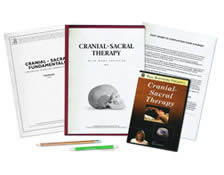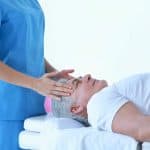As a general rule, people with arthritis reap many benefits from skillfully applied massage therapy sessions. Because it can improve joint movement, relax tense muscles and stimulate the flow of blood and nutrients to the skin and underlying tissues, massage therapy is a top consumer choice for managing arthritis pain. However, localized bodywork could be risky for those suffering from avascular necrosis, a disease involving loss of blood supply to the bone that causes sections of the bone to die. When this disease targets the end of bones at a joint, the joint can collapse and cause arthritis.
Since avascular necrosis contraindicates some types of massage AND it can lead to arthritis, practitioners must consider this condition a red flag. Instead of assuming that all sources of arthritis could benefit from an invigorating massage routine, massage therapists must be familiar with this pathology to avoid accidentally causing harm to their client.
What Is Avascular Necrosis?
Otherwise known as osteonecrosis, aseptic necrosis or ischemic bone necrosis, avascular necrosis is a disease in which the bone loses its access to the body’s blood supply. The unfortunate consequence of a bone being sequestered from the circulatory system is its breakdown and disintegration. At first, the affected bone becomes increasingly porous and soft. Eventually, the affected bone becomes brittle and can break very easily.
With an estimated 10,000 to 20,000 cases a year in the U.S., avascular necrosis can affect people of all ages. Although approximately 90 percent of avascular necrosis cases affect the hip – the joints of the knee, ankle, wrist, shoulder, spine and jaw can also be involved.
Causes of Avascular Necrosis
The most likely cause for avascular necrosis is traumatic injury. Breaking a bone or dislocating a joint are two examples of the kind of trauma that could damage a bone’s blood supply. The two other most common ways that the bone can lose its source of oxygen and nutrients, include:
- Corticosteroids – People who have taken high doses of corticosteroids for long periods of time (such as those with rheumatoid arthritis or lupus) are more likely to fall victim to avascular necrosis. For more information, read the article: How a Commonly Used Steroid Affects Massage.
- Alcohol Abuse – Heavy drinking can cause fatty deposits to form in the blood vessels, a condition that restricts the flow of blood. Medical researchers have found that the more alcoholic drinks consumed each day, the higher a person’s risk for avascular necrosis.
Massage Therapy Risk
Because there is a risk that deep tissue, effleurage, tapotement, friction, traction, petrissage, compression, passive stretching or any other directly applied bodywork technique can precipitate a break in necrotic bone, practitioners must exhibit caution when working with a diagnosed case of avascular necrosis. Speaking with the client’s physician is the best way to gauge if the affected joint is strong enough to endure the pressure of massage therapy.
Safe Avascular Necrosis Approaches
In lieu of receiving a physician’s documented permission to work on a joint affected with avascular necrosis, there are some alternative approaches massage therapists can use for a therapeutic session. Since physical pressure on the joint itself could exacerbate pain and cause damage, some suggestions for avoiding this problem include:
- Distally Applied Shiatsu – By working on distal circulatory points on the meridian affected, you can enhance circulation to the necrotic bone without putting the decayed tissue at risk. For example, the kidney, spleen and gallbladder meridians all pass through the hip. Thus, stimulating points such as Kidney 1, Spleen 6 and Gallbladder 34 can enhance circulation through the meridian up to the hip.
- Energy Healing – Commonly used in hospitals or on frail recipients, energetic touch is known for being gentle, yet therapeutic. By influencing a client’s energy field, energetic healing can enhance circulation with little or no touching.
- Cranial-Sacral Therapy – Using pressure equivalent to the weight of a coin, cranial-sacral therapy enhances the circulation of the cerebral spinal fluid that bathes the cranium and spinal cord. Especially if the spine or jaw are affected by osteonecrosis, this movement may encourage the growth of new blood vessels to reach out to the necrotic bone site.
Since massage therapists see clients with a variety of complex health issues, practitioners need to have an understanding of the conditions they might face. Many types of massage can cause irreparable damage to the bones of a client with avascular necrosis. Due to this risk, bodyworkers who uncover arthritis in their client’s history must inquire further to make sure it does not stem from avascular necrosis. And, if the client does reveal avascular necrosis, the practitioner should be alerted to the ease by which massage could cause damage. Luckily, techniques such as shiatsu, energy healing or cranial-sacral therapy can improve circulation at the site of necrosis to reduce pain – without risking an accidental fracture of the necrotic bone.
















